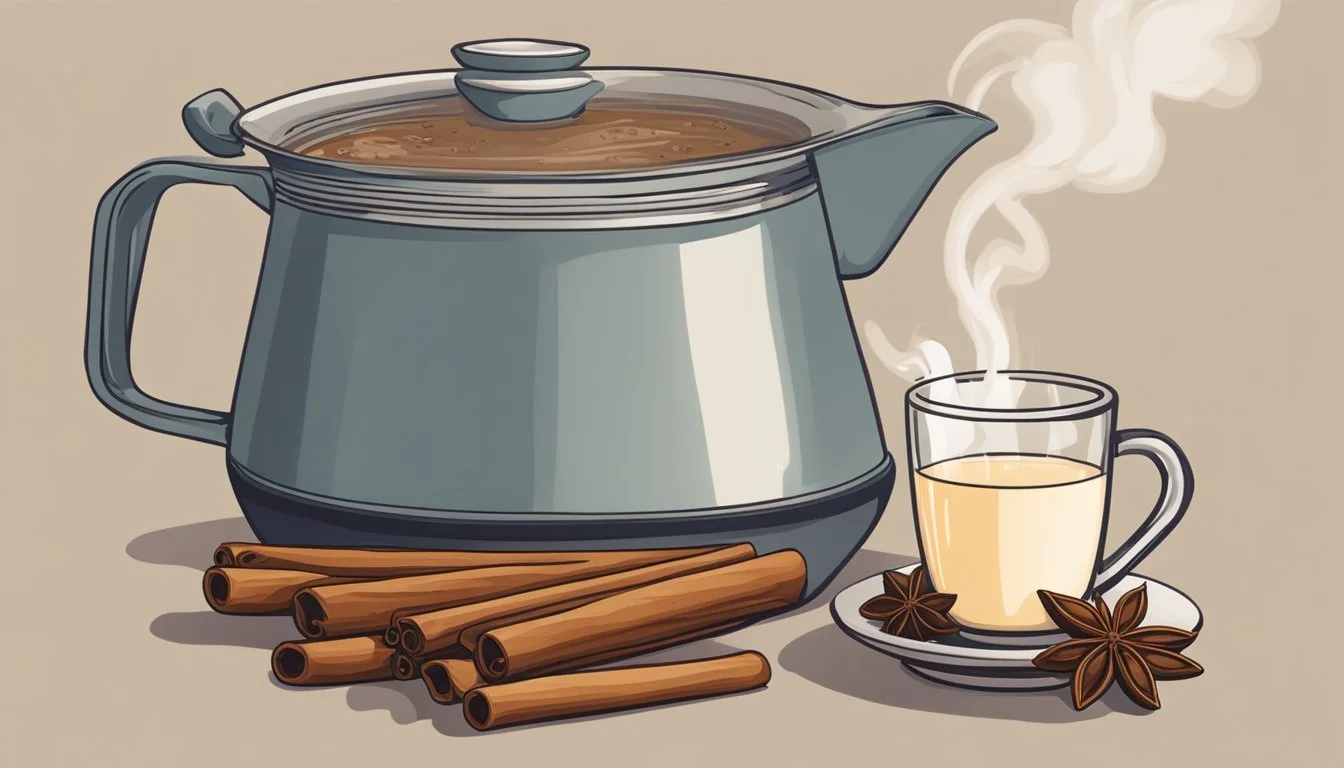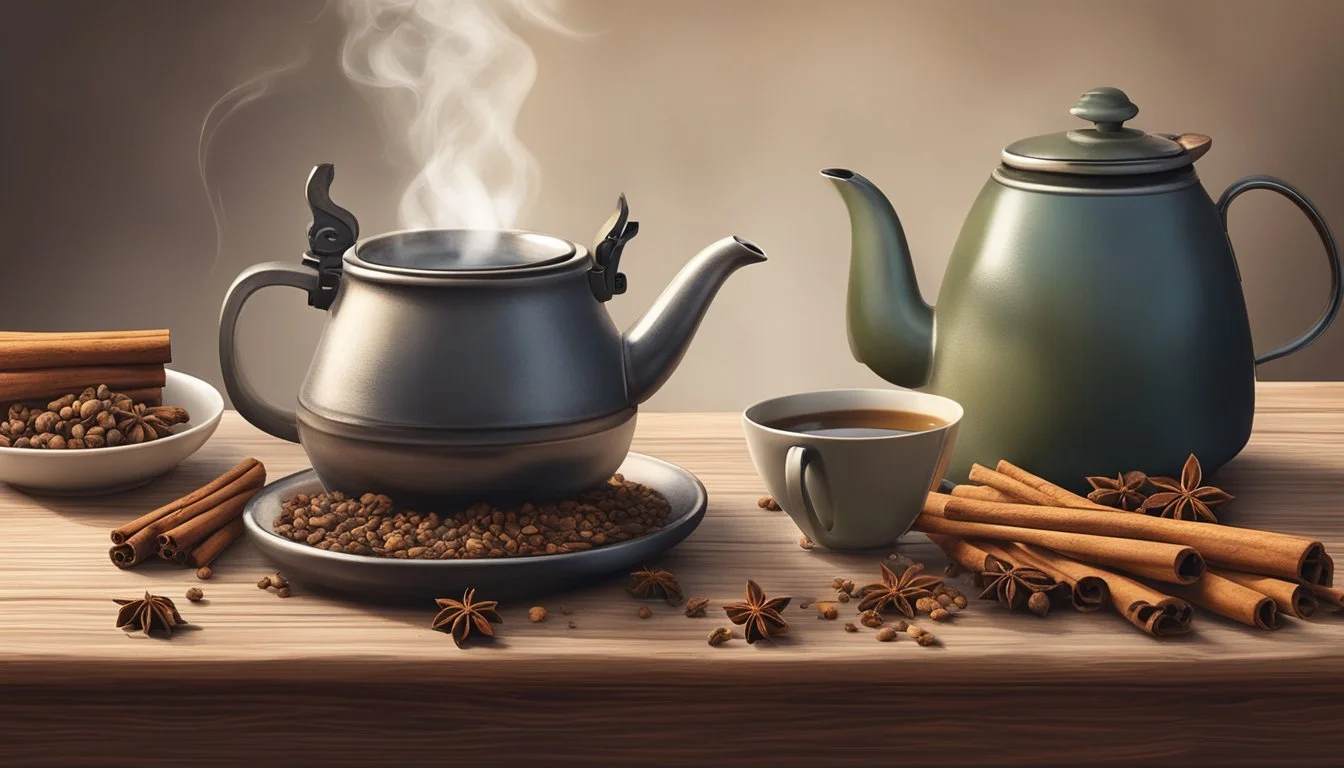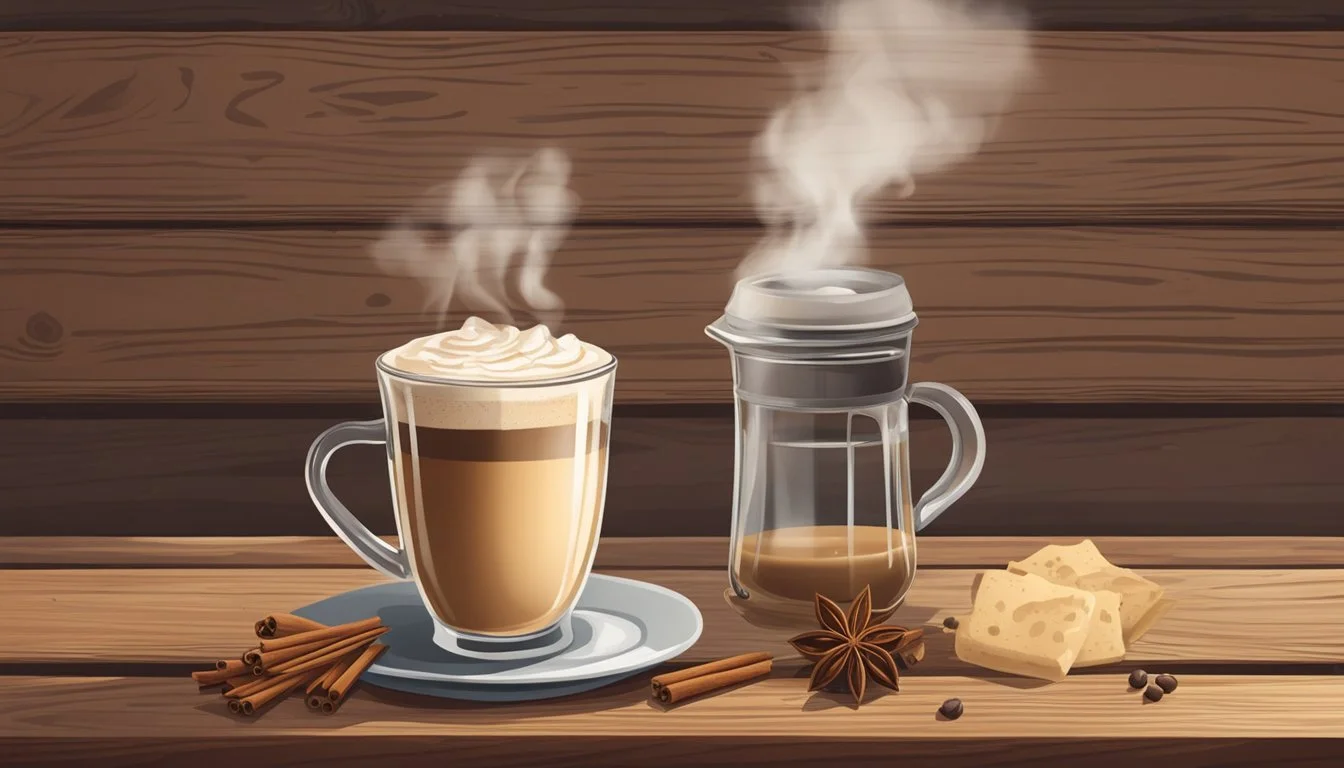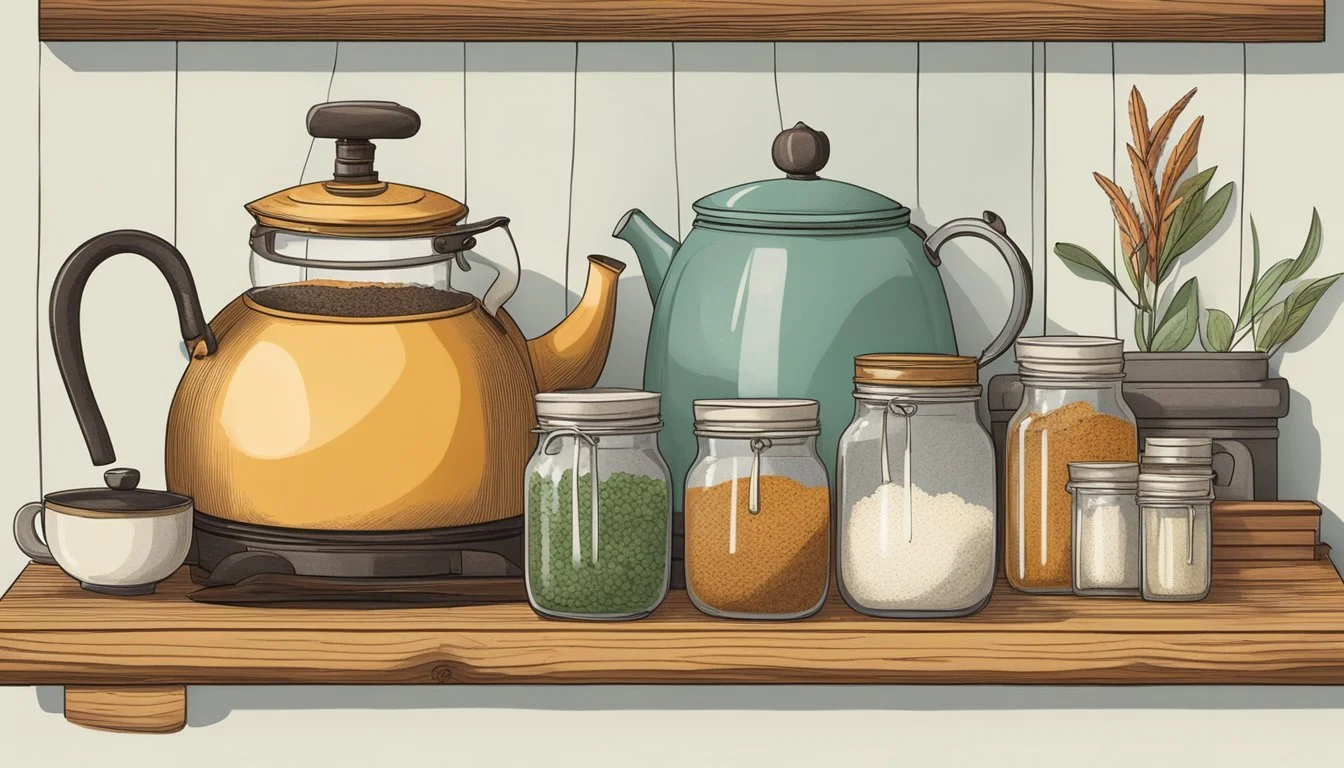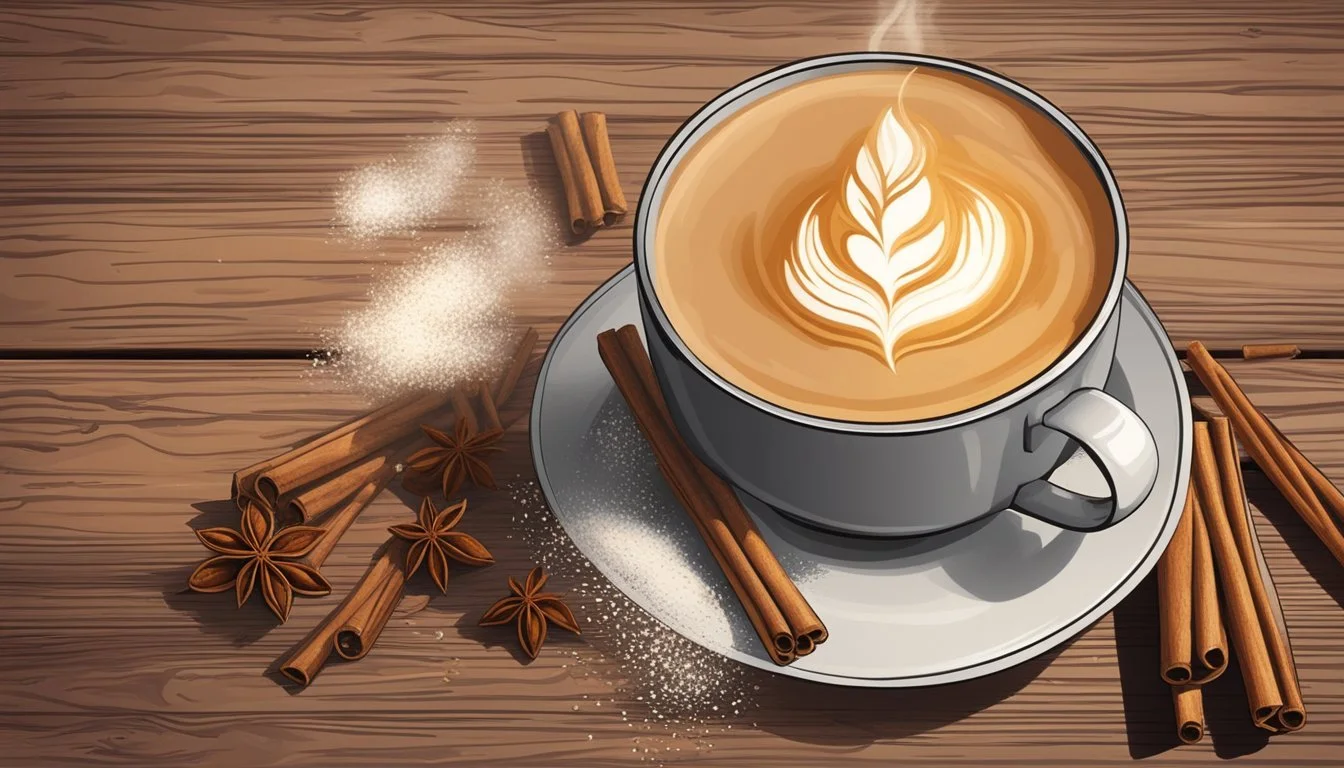How to Brew a Texas-Style Chai Latte
Your Ultimate Guide
The Chai Latte, a beloved drink known for its fragrant spice blend and creamy texture, has found a unique twist deep in the heart of Texas. The state's bold flavors and preference for hearty beverages have led to the development of a Texas-style Chai Latte. This variation of the classic Chai Latte retains the traditional core of the drink—black tea infused with spices—while incorporating local Texas elements to elevate the experience.
In crafting a Texas-style Chai Latte, the selection and balance of spices are key. Texans often enjoy a robust flavor profile, so the chai blend might include an extra kick of cinnamon or a hint of spicy pepper to complement the usual cardamom, cloves, and ginger. The milk steeped with these warming spices is then carefully combined with a strong black tea, a nod to the classic chai's origins, ensuring a rich and harmonious fusion.
The Texas Chai Latte is as much about the method as it is about the ingredients. It is traditionally brewed with a spirit of patience, allowing each flavor to fully manifest. Enthusiasts may choose local dairy for a fresh, full-bodied texture, and sweeteners like honey or molasses to align with regional tastes. This infusion of Texas pride into the Chai Latte creates a drink that is both comforting and distinct, much like the Lone Star State itself.
Understanding Chai Latte
The chai latte blends the comforting warmth of tea with a medley of aromatic spices and the richness of milk, creating a beverage celebrated for both its flavor and its storied past.
Origins and Popularity
The chai latte has its roots in the age-old Indian tradition of making masala chai, a blend of black tea infused with fragrant spices. It gained considerable popularity in the West where it has been adapted into a creamier and sweeter variant known as the chai latte. This Western adaptation typically involves a combination of steamed milk and a spiced tea concentrate, appreciated for its delightful balance of spicy and sweet.
Key Ingredients
Chai lattes consist of several key components that are fundamental to its distinct taste profile:
Tea: Usually, a strong black tea serves as the base.
Spices: A blend that may include ginger, cinnamon, and cardamom.
Milk: Often steamed to create a frothy texture.
Sweeteners: Typically sugar or honey is added to enhance the flavor.
The exact proportion and types of spices can vary, which allows for a range of flavor profiles and personalization.
Health Benefits
Chai latte, in moderation, can contribute to a person's overall well-being due to the individual health properties of its ingredients.
Ginger: Known to aid digestion and reduce inflammation.
Cinnamon: It has antioxidant properties and may reduce blood sugar levels.
Cardamom: May help lower blood pressure and has anti-inflammatory effects.
While the chai latte can offer these benefits, they should be balanced with the consideration of added sweeteners which can contribute to calorie intake.
Texas-Style Chai Latte
The Texas-Style Chai Latte merges the classic warmth of chai spices with the bold character often associated with Texan beverages. It often incorporates local preferences for flavors and strength, representing a unique take on the traditional chai latte.
Defining Texas-Style
A Texas-Style Chai Latte differentiates itself with a robust spice profile and the inclusion of local ingredients. The typical latte is emboldened with strong black tea and a rich blend of spices such as cinnamon, cardamom, cloves, and ginger. However, the Texas twist may add local pecans or a hint of Texas honey for sweetness, providing a distinct flavor that pays homage to the state's culinary heritage.
Cultural Significance
In Texas, beverages are not just thirst quenchers, they're conversation starters and cultural staples. In cities like Austin, known for their foodie culture, a chai latte is more than a seasonal sipper; it's a year-round favorite. The Texan version is cherished for its ability to reflect local tastes, with boldness in flavors that thread through Texan cuisine. It's a symbol of communal gathering, often enjoyed in local cafes that serve as cultural hubs.
Local Variations
Within Texas, one can find a spectrum of variations on the chai latte, each catering to regional preferences and seasonal offerings.
Austin: Known for its eclectic vibe, Austinites may lean towards artisanal versions, with organic, locally-sourced ingredients and a dash of creativity, like adding lavender or smoked Texan pecans.
Seasonal Sippers: Throughout the year, the chai latte transforms to embrace seasons; a splash of pumpkin in the fall or a chilly iced version during the scorching summers.
The Texas-Style Chai Latte is as dynamic as the state itself, adapting to the rhythms of its people and their diverse palates.
Ingredients and Equipment
Preparing a Texas-style Chai Latte requires specific ingredients and equipment to capture its unique Southern twist. This section will guide readers through the necessary items and offer alternatives to customize the latte to their taste.
List of Ingredients
Tea: 3-4 chai tea bags or loose leaf black tea
Spices:
1 (2-inch) piece of fresh ginger, thinly sliced
2 sticks of cinnamon
1 teaspoon of allspice
Sweeteners:
2 tablespoons honey or real maple syrup
Optional: sugar to taste
Milk: 2 cups of whole milk
Pumpkin: 2 tablespoons pumpkin purée (optional for a pumpkin chai variant)
Necessary Equipment
Saucepan: For brewing the tea and spices.
Fine-mesh strainer: To filter out the spices after brewing.
Milk frother or whisk: To aerate the milk, creating a foamy texture.
Ingredient Alternatives
Tea: Herbal tea can be substituted if caffeine-free options are preferred.
Sweeteners: Instead of honey or maple syrup, one could opt for sugar or a sugar substitute.
Milk: Non-dairy alternatives like almond, soy, or oat milk can be used.
Pumpkin: Real pumpkin can be roasted and pureed at home for a fresher taste in a pumpkin chai variant.
Spices: Ground cinnamon can replace cinnamon sticks for convenience.
Brewing Techniques
To craft a Texas-style chai latte, one should pay close attention to the brewing process, which involves precise preparation, careful steeping, and proficient milk frothing.
Preparation Methods
Brewing starts with selecting the right chai blend; typically, a strong black tea foundation is combined with spices such as cinnamon, cardamom, cloves, and ginger. In Texas, they often appreciate a bolder chai, so one might consider adding a touch of local ingredients like pecan or mesquite. To begin, gather 1 teaspoon of loose leaf tea or 1 chai tea bag per 8 ounces of water. To enhance the flavors, dry roast the spices for 3 to 4 minutes until they emit a warm aroma.
Steeping the Tea
Water quality is imperative to the success of the chai. It should be fresh and filtered before bringing it to a full boil. Once boiled, pour the water over the tea and spice mix, ensuring it's hot enough (about 212 F) to extract the full range of flavors. Steep the tea for 5 to 10 minutes, depending on desired strength, and utilize a fine-mesh sieve when pouring to remove loose tea leaves and spices.
Milk Frothing Techniques
The choice of milk can vary according to taste—cow's milk provides a traditional richness, but oat, almond, or soy can offer unique flavor profiles. Heat the milk to about 150 F to 155 F, making sure not to boil it, as overly hot milk can become burnt and bitter. Using a milk frother, create a smooth, creamy foam. For those without a frother, a whisk or a shaken jar can produce a similar, though possibly less refined, frothiness.
Customizing Your Chai Latte
Personalizing a chai latte to one's taste involves modifying spice intensity, sweetness, and milk choices. Each adjustment contributes uniquely to the overall flavor profile of the beverage.
Adjusting the Spice Levels
To control the spice levels in a chai latte, one can increase or decrease the quantity of each spice. A Texan-style chai latte often includes a bold mix of cinnamon, black peppercorns, cloves, and cardamom. For a milder flavor, they can start with smaller amounts of peppercorns and cloves. Conversely, to intensify the warmth, they might add an extra pinch of cinnamon or an additional cardamom pod.
Sweetness Variations
The sweetness in a chai latte can range from subtle to rich, depending on the choice of sweetener. Traditional options like white sugar or honey provide a mellow sweetness, while brown sugar or dark brown sugar impart a deeper, molasses-like flavor. For a unique twist, a chai latte enthusiast might experiment with a caramelized maple glaze, drizzling it over the froth for additional complexity.
Mild Sweetness: 1 tablespoon honey or sugar
Rich Sweetness: 2 tablespoons dark brown sugar or caramelized maple glaze
Dairy and Non-Dairy Options
The base of a chai latte can be as diverse as the sweeteners used. Dairy enthusiasts might opt for whole milk for its creaminess, while those preferring non-dairy alternatives have options like cashew milk, almond milk, or even oat milk for different flavor nuances. Some may also incorporate a spoonful of pumpkin purée for a seasonal variant, enhancing the body and taste of the chai latte.
Dairy: Whole milk, steamed and frothed
Non-Dairy: Cashew milk, almond milk, steamed and frothed
Seasonal Twist: Add 1 tablespoon pumpkin purée for a pumpkin chai latte
Serving Suggestions
When serving a Texas-style Chai Latte, it's important to consider complementary foods, attractive presentation, and the adaptability of the latte to seasonal flavors and events.
Accompaniments
For a hearty breakfast or brunch, a Texas-style Chai Latte pairs splendidly with:
Pancakes: An American classic that balances the spiciness of the chai with its soft, buttery texture.
Waffles: Their crispy edges and deep pockets catch syrup that can echo the chai's sweetness.
French Toast: With its custardy center and cinnamon flavor, it complements the chai spices.
Oatmeal: A soothing choice, especially when topped with brown sugar or a cinnamon stick, enhancing the chai's warm notes.
A chai latte also goes well with pastries such as:
Pumpkin Crullers: Their seasonal spice profile and sweet pumpkin flavor harmonize with a chai latte.
Presentation Tips
The visual appeal of a Texas-style Chai Latte can be elevated with simple touches:
Serve in a clear mug to showcase the creamy color and texture of the latte.
Use a cinnamon stick as both a stirrer and garnish, adding to the aesthetic and aroma.
Sprinkle a dusting of ground cinnamon or nutmeg on the froth for a hint of sophistication.
Seasonal Pairings
Adjust the pairing options to fit seasonal offerings for an elevated experience:
In autumn, a Pumpkin Latte variation is a fitting choice, garnished with whipped cream and a sprinkle of pumpkin spice.
During warmer seasons, consider serving an Iced Chai Tea Latte to refresh and rejuvenate.
Accompany with seasonal fruit or desserts, such as pumpkin crullers in the fall or citrus-infused pastries in the summer, to complement the chai latte.
Storage and Preservation
Proper storage extends the enjoyment of a Texas-Style Chai Latte, whether one prefers it chilled or ready to reheat. Adhering to these guidelines ensures flavor consistency.
Refrigeration Tips
To refrigerate a freshly brewed Texas-Style Chai Latte, one should use a clean, airtight pitcher or container. The chai latte can be kept in the refrigerator for up to five days. Here's how to best preserve it:
Cool to room temperature before refrigerating to maintain flavor and prevent contamination.
Airtight containers are crucial; they prevent absorption of other refrigerator odors.
Label the container with the date to keep track of freshness.
Freezing Instructions
Freezing a Texas-Style Chai Latte is an excellent option for long-term storage, with the proper steps taken to maintain quality:
Portion the chai latte into individual servings before freezing for ease of use.
Utilize freezer-safe bags or containers that are sealed tightly to prevent freezer burn.
Thaw in the refrigerator overnight when ready to consume.
Shelf Life
The shelf life of a Texas-Style Chai Latte will depend on the method of storage:
Refrigerated chai latte should be consumed within five days for optimal quality.
Frozen chai latte can maintain quality for up to three months.
Note: The shelf life can be shortened by factors such as frequent temperature changes or improper sealing.
By following these storage and preservation tips, aficionados can ensure their Texas-Style Chai Lattes remain as delectable as the day they were brewed.
Advanced Techniques and Variations
Exploring advanced techniques and introducing variations can elevate the Texas-style chai latte to new heights. These methods allow for a refreshing twist on the classic hot beverage.
Creating Ice Blends
A Texas-style chai latte can be transformed into an iced chai blend, ideal for combating the Texan heat. The key is to start with a chai tea concentrate—steep the spices and tea longer than usual to create a robust flavor. Once chilled, blend the concentrate with ice until smooth. For a creamier texture, one can mix in cold brew coffee to create a chai-cold brew hybrid, perfect as a summer refresher.
Iced Chai Blend Recipe:
Chai tea concentrate: Chilled
Ice: As needed
Optional: Cold brew coffee
Blend until smooth and serve immediately for peak flavor and consistency.
Crafting Tea-Based Cocktails
Chai tea's versatility extends into the realm of spirits, merging the world of tea with that of cocktails. To craft a Texas-style chai latte cocktail, combine a chai tea concentrate with a spirit of choice, such as bourbon or rum, to complement the chai's spice profile. Serve over ice and garnish with a cinnamon stick or star anise for visual appeal and added aroma.
Chai Latte Cocktail Formula:
Chai tea concentrate: 1 part
Spirit (e.g., bourbon, rum): 1 part
Ice: 1 cup
Mix thoroughly, and adjust proportions to taste for a personalized tea-based cocktail.
Purchasing and Sustainability
When crafting a Texas-style chai latte, selecting quality ingredients, considering costs, and shopping sustainably are fundamental to both the flavor of the beverage and its environmental impact.
Choosing Quality Ingredients
Consumers should look for tea that showcases its origin and possesses a certificate of authenticity. High-quality chai tea bags or loose-leaf chai blends are preferred for their robust flavor and spice profile. Green tea aficionados can opt for a green tea-based chai, although traditional chai is typically made with a black tea base.
Form: Loose-leaf tea often ensures a fresher taste and allows for a customizable strength.
Type: Full-bodied Assam or Darjeeling teas are excellent bases for chai lattes.
Cost Considerations
Budgeting for a chai latte includes the price of tea, spices, and milk. The cost will vary based on the quality and form of tea:
Package: Bulk purchases can reduce costs but may compromise freshness.
Price: Organic and fair-trade teas may cost more but provide better ethical assurance.
Shoppers should compare prices from different retailers to find the most cost-effective options without compromising on quality.
Sustainable Shopping Tips
Sustainability in tea shopping entails looking for eco-friendly packaging and supporting ethical tea brands. Consumers are advised to:
Tea: Choose brands that offer biodegradable or compostable tea bags.
Herbal teas: Select those that are sourced from sustainable farms.
Purchasers can also consider the environmental policies of the tea company, including whether they engage in fair trade practices and the sustainability of their operations.

